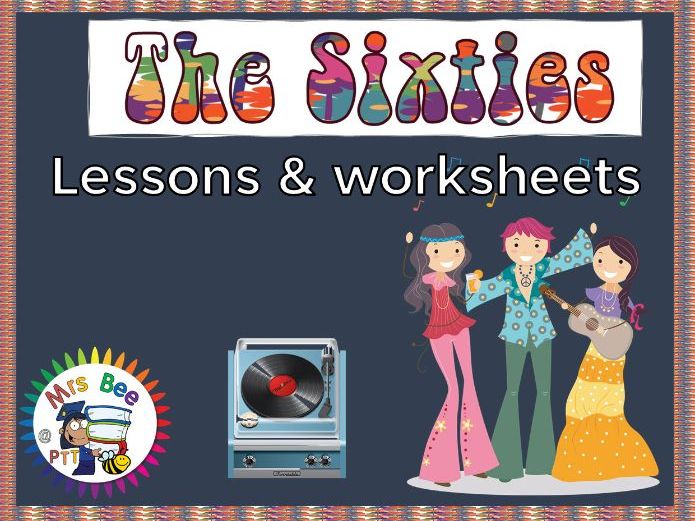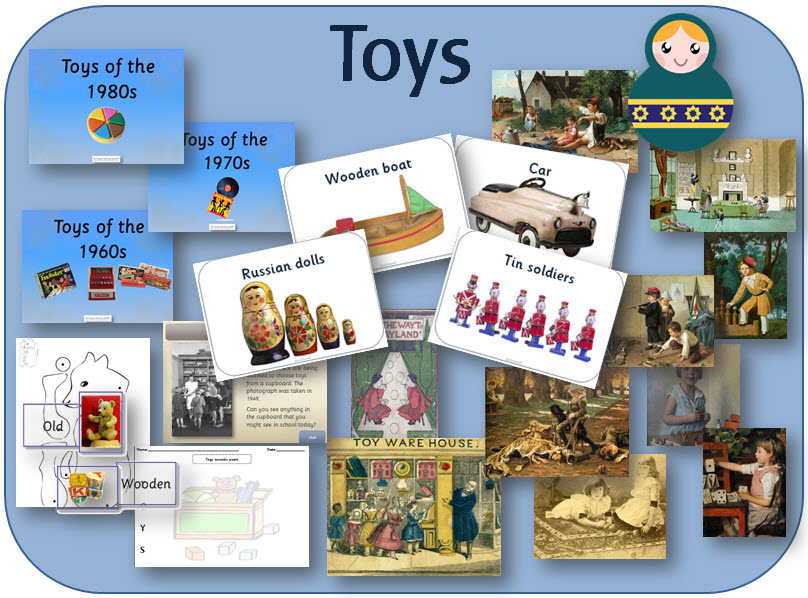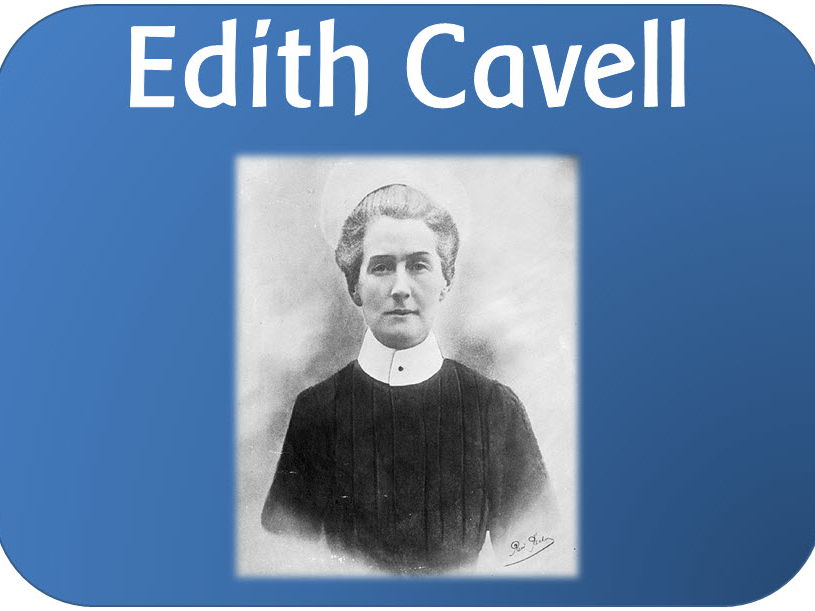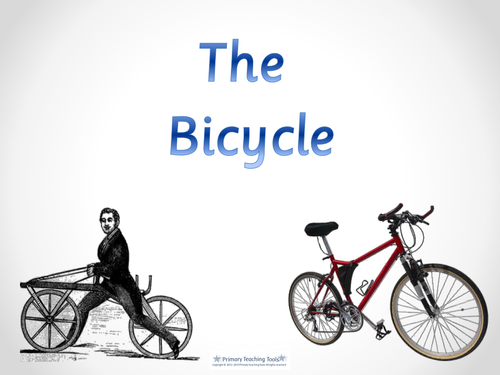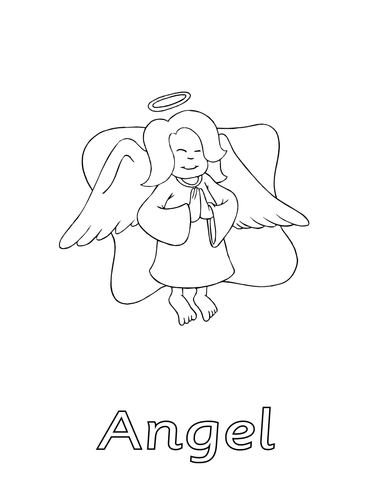
404Uploads
1071k+Views
683k+Downloads
Cross-curricular topics

The Sixties lessons and worksheets KS2 1960s history topic resources
A set of PowerPoint lessons to teach different aspects of life in the sixties, plus headings and worksheets. It is suitable for teaching children aged 8-11.
It includes:
INTRODUCTION TO THE 1960S - A short introduction explaining what a decade is and how many decades ago the Sixties were. Poses some questions for the children to think about, with a follow up activity.
SIXTIES DAILY LIFE - How people in the 1960s had ‘never had it so good’; Money - Explanation of pounds, shillings and pence with illustrations of the coins and notes; Shopping - how supermarkets started expanding, Green shield stamps, and food eaten in the Sixties; Transport - Expansion of motorways, popular cars, and air transport; Technology - Police call boxes, public telephones, telephones in the home, computers, computer games, the forerunner to the Internet, lasers, calculators. (25 slides)
SIXTIES SCHOOL LIFE - What it was like going to school in the 1960s. (10 slides)
SIXTIES KEY EVENTS - A timeline of events from around the world from 1960 to 1969, with three highlighted events in each year. (11 slides)
SIXTIES HOMES - New housing developments, tower blocks and older houses that needed modernising; How the washing and cleaning was done; Home fashions - kitchens, lounges, ornaments, and furniture; Television, and how it progressed over the decade. (14 slides)
SIXTIES FAMOUS PEOPLE - Neil Armstrong, Yuri Gagarin, Alfred Hitchcock, John F Kennedy, Jacqueline Kennedy, Muhammad Ali/ Cassius Clay, Mary Quant, Francis Chichester, Andy Warhol, and Twiggy. There is a page for each person, with a short description of what they are famous for. (12 slides)
SIXTIES FASHION - How fashioned changed from the beginning to the end of the decade and how it was influenced by music. (17 slides)
SIXTIES MUSIC - How people listened to music in the Sixties - records and record players; radios and Pirate radio stations, introduction of tape players, jukeboxes; Sixties music fans - Mods and Rockers, Skinheads and Hippies; Sixties bands and singers - The Beatles, Elvis Presley, Chubby Checker, Cliff Richard, The Beach Boys, The Rolling Stones, The Kinks, The Monkees, Jimi Hendrix, and the Woodstock Festival. There is a picture and description of each band / singer, and a their most popular hit of the Sixties. (21 slides)
SIXTIES TOYS - Pictures of popular Sixties toys, with short descriptions. (9 slides)
Plus a set of 11 worksheets with follow-up activities.
Some of the PowerPoints contain links to relevant videos though SafeShare T.v., which filters unwanted adverts from the clip. You may need to check that you can access this in school.
The links were checked before uploading, but if they stop working please feel free to contact me or email me: primaryteachingtools@gmail.com and I will update them.
This pack is an updated version of my previous Sixties pack.

History of Trains powerpoint
The PowerPoint is 55 pages long. It covers the history of trains from the first vehicle to be pulled on rails over 200 years ago; steam trains; the locomotive; the Rocket; diesel trains, through to the modern electric trains of today.
It is written in the style of a non-fiction book, with a contents page, index and glossary.
It would be suitable for upper KS1 or lower KS2 and can be used in a history topic or as a non-fiction book in English.

The Titanic - powerpoint lessons, worksheets and activities suitable for KS1 KS2
This is a set of 6 PowerPoint lessons and printable worksheets; suitable for teaching children aged 7-11
PowerPoint lessons:
TITANIC INTRODUCTION
A page for recording what the children already know, and a brief outline of the 1900’s, the Titanic, and her maiden journey.
BUILDING THE TITANIC
Who built and designed the Titanic and where it was built.
ON BOARD THE TITANIC
A 28 page PowerPoint, looking at who was on board - the crew, the different classes of passengers, and what each class was like, and what the Titanic was like inside.
TITANIC’S MAIDEN VOYAGE
A 30 page PowerPoint, telling the story of the Titanic’s fateful maiden voyage. It includes an explanation of how icebergs travel to the Atlantic Ocean, and looks at some survivors and what happened to the victims of the disaster.
TIMELINE OF THE VOYAGE
A detailed step by step report of the events of the Titanic’s maiden voyage.
FINDING THE TITANIC
Looks at how the Titanic was rediscovered in 1985, and what has happened to her since. Includes pictures and artefacts from the wreck.
PDF FILES :
BLANK MAP:
For the children to map out the route the Titanic took
WHAT I ALREADY KNOW ABOUT THE TITANIC:
sheet for the children to record what they already know and what they would like to learn
WRITING SHEET:
For creative writing
NEWSPAPER REPORT:
For report writing
SEQUENCING:
Images for sequencing the story

The Viking & Anglo-Saxon struggle for the Kingdom of England:powerpoints, worksheets, activities
A series of PowerPoint lessons, worksheets and activities to teach how the Vikings and Anglo-Saxons fought for the Kingdom of England up to the time of Edward the Confessor.
POWERPOINTS:
1) ANGLO-SAXON ENGLAND AD 780
Life in in England before the main arrival of the Vikings towards the end of the 8th century / How the Anglo-Saxons lived / How the towns were structured / The importance of the monks.
2) VIKING RAIDS AND INVASIONS AD 797 - 783
Timeline / Introduces the Anglo-Saxon Chronicle as evidence / The first known attack on Britain by the Vikings / The second attack on Lindisfarne/Holy Island / Viking longships / Viking warriors and equipment / Beginning of Viking settlement in England
3) THE VIKINGS SETTLE & ALFRED FIGHTS BACK AD 866 - 927
Viking invasions and settlement / The Heathen Army / York / King Alfred / Guthrum / Danelaw / Alfred the Great and his fight against the Vikings / Edward the Elder / Athelstan / The Battle of Brunanburh
4) VIKING DAILY LIFE
Family life / Clothing / Homes / Daily life / Viking law / Music / Food / Sport / Arts and crafts / Viking beliefs, Asgard and gods, days of the week named after Viking gods / Viking burials
5) ATHELSTAN, ETHELRED AND ANGLO-SAXON LAWS AD 927 - AD 991
Athelstan and government of England / The Witan / Hundreds / Moots / Reeves / Laws / / Punishments / Wergild / Ethelread the Unready
6) THE RETURN AND END OF THE VIKINGS AD 991 - 1066
Further Viking raids / St. Brice's Day massacre / Sweyn Forkbeard / King Canute / Edward the Confessor / Harold Godwinson / William the Conqueror / The Battle of Hastings / The end of the Viking era
7) LOOKING AT EVIDENCE
Place names / Viking sagas / Anglo-Saxon Chronicles / Surnames and DNA / The Bayeux Tapestry / Archaeology / Treasure discoveries / Runestones
RESOURCES TO PRINT (pdf): Most sheets are open-ended worksheets, with an image and lines for research, reports etc.
What I already know about the Anglo-Saxons and Vikings
What I would like to find out about the Vikings
The arrival of the Vikings
The Vikings attack the monasteries
Danelaw
King Alfred the Great
The Heathen Army
The Treaty of Wedmore
Viking daily life
Anglo-Saxon laws
Athelstan
Ethelred the Unready
Battle of Hastings
Battle of Stanford Bridge
Death of King Harold
Edward the Confessor
King Harold
The Vikings return
Bayeux Tapestry
Viking place names
Viking runes
Topic covers x 3
Viking ships
Viking warriors
Writing border - Edward the Confessor
Writing border - Viking ship
Plus a copy of the Anglo-Saxon Chronicle (in Word)
Vikings & Anglo-Saxons medium term adaptable plan, with web links.

The history of flying & the first aeroplane flight PowerPoint lessons and worksheets
A set of PowerPoint presentations plus a medium term plan looking at the history of flight. The PowerPoints are:
The history of flight: Describes the development of flight from the first kites made by the Chinese around 200 BC to the modern types of aircraft today. Includes kites, wings, ornithopter, hot air balloon, hydrogen balloon, airships, helicopters, autogyro, biplanes and monoplanes, flying boat, the jet engine, space shuttles and Concorde. Also looks briefly at the work of: the Montgolfier brothers, George Cayley, Otto Lilienthall, Samuel Pierpont Langley, the Wright brothers and Frank Whittle.
The first balloon flight ~ The Montgolfier brothers: A story of their lives, and how they designed the Montgolfier balloon.
The first aeroplane flight ~ The Wright brothers: A story of their lives and how they designed the first heavier than air powered aircraft.
How to make a paper plane (x2): Step by step instructions on how to make a paper plane, with illustrations.
Printable resources
Maps of the world / Europe/ UK/ North and South America/ South Asia/ Australia/ China/ Russian Federation / Mexico/ Africa
Worksheets(15):
Topic cover
9x sheets with images of different types of inventions for flying
The Montgolfier brothers writing sheets
The Wright brothers writing sheets
Design a hot air balloon x 3
Airship picture
Pictures of the Wright brothers and their planes
3 x A4 titles The history of flight / The Wright brothers / The Montgolfier brothers
A-Z lettering
Large ‘Flight’ letters
Planning document

Toys KS1 topic resources - powerpoints, activity and display pack
A set of powerpoints showing photographs of the most popular toys of the pre-50s, 50s, 60s, 70s, 80s, 90s and modern toys; an introduction to the history of toys - going back to dolls in Ancient Greece to computers today; a look at portraits of children from the past playing with toys; a sorting toy activity into old and new, and an old poem about the wonders of a toy shop.
There are also 4 maths powerpoints looking at addition and subtraction in the toy shop, with cards to print for games.
The activities include:
An acrostic poem template
Animal cut-out templates to join together to make a moving toy
Colouring sheets
Pictures of new/old teddy
Puppets for role play
Russian doll set to print and laminate for size ordering
6 x Santa lists to use around Christmas
A thaumatrope template with instructions
3 x cover templates for a topic book
Toy sorting cards - to sort into different materials/ properties.
Toys from the past questionnaire to take home to fill in with parents.
A copy of an old book 'What shall we do next' from 1907 full of games and activities that children played
The Wonderful Toymaker fairy tale to read
An outline planning document with cross curricular links that can be adapted.
DISPLAY
Old toys display - photographs
Children's portraits playing with toys
Toys banner
Toys heading
Toys in the past heading
Toys timeline

Transport topic - George Stephenson and the history of trains - powerpoints and activities
Two powerpoints looking at how and why trains developed over time, and the Father of the Railways, George Stephenson, plus 3 worksheets.
George Stephenson and locomotives: Looks at James Watt and his steam engine design; Richard Trevithick and his steam engine improvements, and the life of George Stephenson, and how he became known as the 'Father of the Railways'. Tells the story of the first steam locomotives; the Rainhill Trials; the Liverpool and Manchester Railway; and new steam locomotive designs up to 1941. Also briefly and simply explains how steam engines work.
Trains now and then: Shows different parts of a steam locomotive, and looks at pictures of different locomotives, and how they developed from George Stephenson's Rocket, to the modern bullet trains of today.
Steam train worksheets: 3 different worksheets, showing a picture of a steam train to label and caption.
The Rocket worksheet: To compare modern trains with old steam locomotives.
Steam train template: An outline of a steam train, to use for colouring, collage, paint etc.

Year 5 science Properties and changes of materials - powerpoints, worksheets and planning
A set of resources for the new science curriculum. It contains:
1a. INTRODUCTION TO THE TOPIC - LO: To find out what the children already know about materials.
WORKSHEET: A sheet for the children to record what they already know and what they would like to find out about materials.
1b. MATERIAL PROPERTIES - LO: To compare and group everyday materials together
POWERPOINT: A look at 12 different properties of materials, with examples of the materials with those properties. It can also be printed out for display.
WORKSHEET 1: Material properties worksheet
2. DISSOLVING - LO: To know that some materials will dissolve in liquid to form a solution, and describe how to recover a substance from a solution
POWERPOINT: Explains the meaning of dissolve and gives examples of different materials that can be dissolved.
3. SEPARATING A MIXTURE - LO: To use knowledge of solids, liquids and gases to decide how mixtures might be separated.
POWERPOINT: Looks at different mixtures and how they can be separated, including sieving, filtering and evaporating.
4. USES OF EVERYDAY MATERIALS - LO: give reasons, based on evidence from comparative and fair tests, for the particular uses of everyday materials
POWERPOINT: Asks the children to study objects to see what properties different materials have. Asks questions about which properties and materials would be best for making certain objects.
5 & 6. REVERSIBLE AND IRREVERSIBLE OBJECTS - LO: look at dissolving, mixing and changes of state, and reversible and irreversible changes.
POWERPOINT: Explains the meaning of reversible and irreversible changes, giving examples of each. Ends with a quiz where the children have to decide what changes have taken place to certain materials.
7. MATERIALS QUIZ: Recap of all the learning objectives.
POWERPOINT : A quiz
WORKSHEET : Sheet for recording quiz answers
WORKSHEET : Sheet for recording what they have learnt
OTHER RESOURCES
A-Z lettering, with a picture background
A4 Properties and changes of materials title
Materials banner/lettering to cut out
Materials topic booklet front cover - with space for children to draw their own design.
Vocabulary PowerPoint - can be used as a show and printed out for display.
Photo cards - 12 objects made from different materials
Investigation and recording sheets - A folder of blank tables, graphs and planning and recording sheets
Year 5 Materials medium term planning: An outline of the activities and learning objectives with websites and ideas. It can be added to and amended for your own use.

Year 5 Science Earth and Space - powerpoints, worksheets, activities and display pack
A pack of resources following the new curriculum objectives.
1. INTRODUCTION TO THE TOPIC - LO:To find out what the children already know about Earth and Space.
Powerpoint: questions about the Earth, Moon, Planets and Sun.
Worksheet: for the children to write down what they know and what they would like to find out.
2. SPHERICAL OR FLAT - LO: Describe the Sun, Earth, and Moon as approximately spherical bodies.
Powerpoint: Introduces what people thought about the Earth a long time ago, and whether it is flat or spherical.
Worksheet: The children have to argue for or against the Earth being spherical.
3. THE EARTH AND SUN - LO: Use the idea of the Earth's rotation to explain day and night and the apparent movement across the sky.
Powerpoint: looks closely at the Earth and Sun and explains the movement of the Earth in relation to the Sun
Worksheets: The children have to write an explanation about night and day, and a recording shadows worksheet.
4. THE SOLAR SYSTEM - LO: Describe the movement of the Earth and other planets relative to the Sun in the solar system.
Powerpoint: Looks at the Earth, Sun, and planets in the solar system. It also looks into where the solar system is, and what other things may be found in it (eg asteroids and comets).
Worksheet: a word document containing images of the planets and the moon to resize and make models.
5. THE PLANETS
Powerpoint: looks at the planets in more detail.
6. THE MOON - LO: Describe the movement of the Moon relative to the Earth.
Powerpoint: looks at the size of the Moon, its distance from Earth, and how it orbits the Earth. It asks why the moon seems to change shape, and explains the phases of the Moon. It also looks at other planets with moons.
Worksheet: A recording sheet to observe the moon over a 30 day period.
7. EARTH AND SPACE QUESTIONS:
Powerpoint: asking questions to recap learning.
Worksheet: for the children to record their answers.
8. Earth and Space quiz in Powerpoint - to end the topic.
OTHER RESOURCES
Banner for display 'Earth and Space' - prints onto 3 A4 pages
A4 title plus A-Z lettering, with a space background
Topic cover - 4 different versions
Vocabulary cards - with images and explanations
Wordsearch
Writing sheets x 4 decorated with Earth / the solar system
Year 5 Earth and Space medium term planning: An outline of the activities and learning objectives with websites and ideas. It can be adapted.

Year 3 Science - Light topic - powerpoints, display and activity pack
A set of IWB lessons, worksheets, activities, planning and display resources following the 2014 curriculum.
It includes 8 powerpoint lessons, worksheets, activities, games and display.

Year 3 science - Animals including humans worksheets, powerpoints, planning and display
A set of resources looking at how animals need the right types and amount of nutrition; and how humans and some other animals have skeletons and muscles for support, protection and movement.

KS1 History: Edith Cavell Powerpoints, worksheets, activities and display pack
A set of resources to teach KS1 about Edith Cavell and how she helped soldiers in the Great War. The pack includes planning, display, interactive whiteboard lessons and class activities.
1 WHAT WAS IT LIKE WHEN EDITH WAS ALIVE
The Powerpoint sets the scene, showing what life was like when Edith was born. It looks at her birth in a chronological framework, and talks about differences between then and now.
Activities:
Now and Then pictures: to look at and discuss, or to use for display
Questions about Edith Cavell: A picture of Edith in her nurses uniform, with questions for the children to think about.
2 THE LIFE STORY OF EDITH CAVELL
The 20 page Powerpoint looks at her life in detail until the time she returns to Belgium when the war begins.
Activities:
The Cavell family Census records
Hotseating questions: Sheet for the children to fill out what kinds of questions they would have liked to have asked Edith
Pictures to tell her story: Six pictures from different times in her life; can be used for sequencing or to illustrate her life story.
The Life story of Edith Cavell Ebook: A contemporary book written about Edith. (Not suitable to give to the children to read, but useful to look at passages)
3 WHAT DID EDITH DO IN THE FIRST WORLD WAR
The 26 page Powerpoint tells the story of the last year of Edith's life. It looks at Belgium at the beginning of the war, and what Edith did for the soldiers. It looks at how and why she is remembered today.
Activities:
1914 map of Europe - accompanied by a Powerpoint showing how Edith travelled to Europe. The map can be used for identifying the countries, or for showing her route to Brussels from Norwich.
Other activities / display resources
Edith acrostic poem sheet
Picture timeline: 10 pictures of Edith from when she was a child to just before she died.
Project cover
Story planner
Word search
Writing sheets (x3)
The story of Edith worksheet
PLANNING
An adaptable plan in Word, following the Primary Curriculum 2014.

Queen Victoria and Queen Elizabeth I Powerpoint lessons
A look at the lives of Queen Victoria and Queen Elizabeth I and how they contributed to national and international achievements.
The pack also looks at life in Tudor and Victorian times, comparing aspects of life that are similar and different.
Also contains a medium term plan.

Nocturnal animals powerpoint
A 30 page PowerPoint file, explaining what nocturnal animals are; why they come out at night; how they feed and live etc. The animals include:
Bats
Owls
Badgers
Foxes
Hedgehogs
Moles
Mice
The file also includes a page of related vocabulary, how nocturnal animals see, and looking for evidence of nightime activity.

Seaside holidays (history and geography) - PowerPoint lessons and worksheets
A set of powerpoint lessons looking at the history and geography of seaside holidays, plus activities, worksheets and display resources.
POWERPOINTS
Seaside mind map: For AfL
Seaside introduction: Looks at why we go to the seaside, and how it differs from other places. It shows pictures of the countryside, town, and seaside, asking children to point out the differences.
What is the seaside like?: Looks at photographs to explore the human and physical features of coastal locations
When do we go on holiday and what do we see?: Looks at the different times of year we have school holidays, and how they coincide with religious festivals. It shows photographs of different objects and activities at modern seaside resorts.
Seaside in the past: 18 seaside photographs from 1880 until the 2000s. The children are asked to talk about what they see in each picture.
Human and physical features: A study of Blackpool, with photographs and maps, to explore the key human and physical features of the resort. The children can match features they see in photographs to a map. There are also links to British seaside tourist websites.
Looking at aerial photographs: Eight seaside locations to look for human and physical features.
How has the seaside changed?: Six pictures of seasides in the past to look at and discuss.
Pictures of seasides in the past: Six pictures of seasides in the past to look at and discuss.
The Victorian seaside: A look at how seaside resorts developed, and why people in Victorian times enjoyed going to the seaside. It looks at the different things that children did at the seaside, and compares them to what children do today.
ACTIVITIES:
Acrostic poem
Aerial photographs of different seaside locations showing pictures of coastal locations around the UK
Playing cards
Colouring pictures
My favourite environment worksheet
Packing list: Ready to go on holiday
My seaside holiday with seaside border, to write a description
Passport of places visited to itemise and describe where they have been
Passport: A blank passport to fill in
Postcard; blank to fill in
Stamps to use on the postcards
Seaside border paper for writing
Seaside holidays in the past: Compare 2 pictures to see how things were different in the past.
Seaside pictures past and present: For activities such as ordering events, describing, comparing etc
Survey – places visited: For a class survey
Topic covers x 4: With ‘The Seaside’ / ‘Seaside Holidays’ headings
Town country seaside description: To describe the different areas
UK jigsaw: England, Northern Ireland, Scotland and Wales
UK map: To mark out places visited
What can you find at the seaside: For making a list
What can you see?
Pictures of the town, seaside and countryside to describe
Plus lots more!

Transport topic - the history of cars - powerpoints
5 powerpoints looking at the history of the wheel, the horse and cart and the development of the modern day car.
Walking : The earliest form of transport. why people went on journeys.
Horse and cart: Transport before the railways and canals - looks at dirt tracks, Roman roads, Macadam roads, Stagecoaches, Omnibuses, and horse riding.
Invention and history of the car: A detailed look at the development of the car, from steam engines and the internal combustion engine, to modern cars of today. Looks at different eras in car manufacture - the Brass Era, Vintage Era, and the Classic car.
History of the Wheel: The earliest types of wheel; the spoked wheel, and other wheel inventions.

Guy Fawkes, Bonfire Night and the Gunpowder Plot - 2 powerpoints, 12 display files and 15 activities
A powerpoint story of Guy Fawkes, the Gunpowder Plot and why we celebrate Bonfire Night, with classroom activities to print and display resources.
Guy Fawkes - Two versions; one for KS1 and one for KS2. It details Guy Fawkes' life, and how he became involved with the other conspirators of the Gunpowder Plot; it explains how he was caught, and why people now celebrate Bonfire Night.
ACTIVITIES:
Bonfire night acrostic poem
Bonfire Night topic cover
Fire border for displaying work
Fireworks border
Gunpowder plot and Guy Fawkes sequencing
Gunpowder plot black and white pictures (for colouring/display)
Gunpowder plot cards
Gunpowder plot word mat
Guy Fawkes topic cover
Letter to Mounteagle
Newspaper report x 4 - Guy Fawkes, The arrest and The conspirators
Blank scroll
DISPLAY
A-Z Flame lettering
Bonfire Night banner
A4 title
Large lettering Bonfire Night
Fireworks border for displays
Confession letter of Guy Fawkes
Guy Fawkes title
Main conspirators poster
Portraits of James I and Guy Fawkes
Posters - Guy Fawkes and the Gunpowder plot
The Fireworks code
The Gunpowder plot pictures

Christmas display pack - headings and lettering
HEADINGS:
The Three Wise Men
Christmas
The Nativity
A-Z LETTERING - Includes all upper and lower cases, numbers and punctuation.
Baubles
Christmas
Reindeer
Snowflake
Snowmen
Christmas Stockings.

